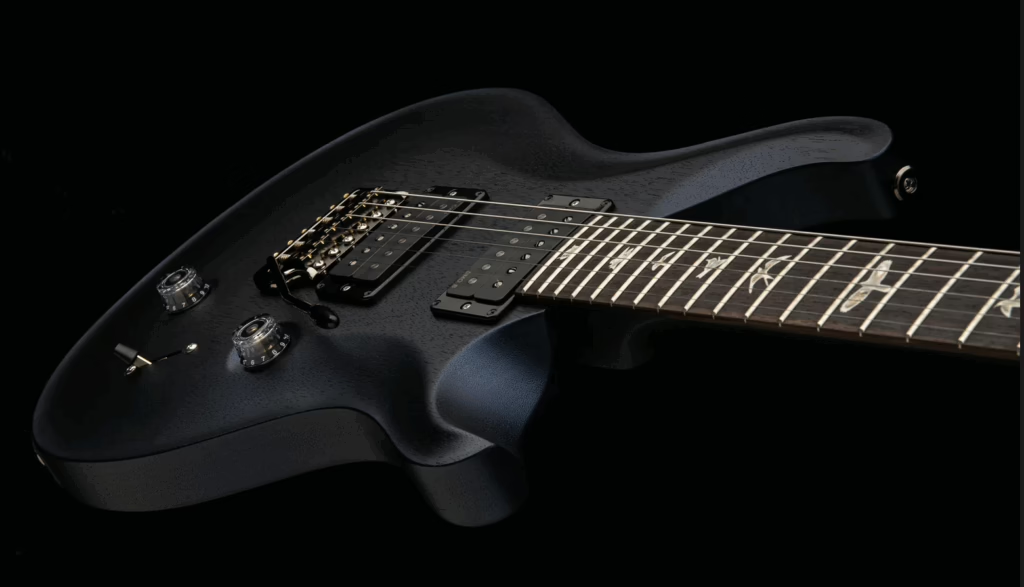Advertisement
Photo provided by: Valeton Pedals
__________________________________________________________________________________
When I’m not on the road, I’m usually found wheeling my Peavey Classic 30 amp and my (not-so-petite) pedalboard on a dolly down Broadway in Nashville – up and down sidewalks, in and out of the car, multiple times a day, five to seven days a week. It’s a full-time gig with a built-in CrossFit membership. And as much as I appreciate the free workout, I can’t lie – this much hauling feels like a cruel twist on “living the dream.”
Like many gigging musicians, I often fantasize about a magical little unit that could replicate my tone without sending me to the chiropractor. I’ve used the BOSS ME-80 for a while, and while it has its moments, it just doesn’t deliver the feel and sound of my full pedalboard and tube amp setup. So, when Valeton sent me their GP-200 for review, I was curious and cautiously optimistic. For under $350, could these compact multi-effects processor be the tone-saving, back-saving unicorn I’ve been hoping for?
First Impressions and Playability
Right out of the box, the GP-200 was fun to use. Building presets, mixing amp and cab models, and exploring tones felt like a creative playground. With 256 preset slots, there’s plenty of room to save and experiment, whether you're crafting ambient textures or punchy lead tones.e felt.
What Surprised Me in the Best Way
One of the GP-200’s biggest strengths is its versatility. For silent practice, you can plug in headphones and use the built-in looper and drum machine without an amp. It also works seamlessly in front of a real amp like a standard pedalboard, and even doubles as a USB audio interface for easy home recording.
As someone who spends a lot of time on the road, I found the GP-200 to be impressively travel-friendly. It’s lightweight, yet built solidly with a rugged metal chassis that can take a few knocks. It feels like a device that could survive life in a gig bag or backpack without complaint.
The amp tones themselves sound surprisingly authentic. I wasn’t expecting boutique amp realism at this price point, but I was impressed by how detailed and usable many of the models were. There are 140 amp and cabinet combinations to choose from, and they span a wide range of genres and tonal flavors. Whether I was going for a clean Nashville twang or something heavier and driven, I found tones that felt musical and responsive.
I also loved the variety of input and output options. The GP-200 includes both balanced (XLR) and unbalanced outputs, which meant I could plug directly into a mixer without needing a DI box. There’s also an auxiliary input for connecting a phone or music player, which made it easy to play along with backing tracks or reference material.
A small design detail that deserves applause is the clever layout of the knobs. The knobs in the back row are slightly taller than those in the front, which reduces the chances of accidentally hitting one when stomping on a nearby footswitch. It’s a minor tweak, but one that shows the designers were thinking practically.
The bright 4.3-inch color screen makes navigation easy and intuitive. Tweaking effects and building signal chains felt quick and hassle-free. I never felt like I was getting lost in a menu maze – which, as we all know, is not always the case with digital gear.
Where the GP-200 Fell Short
Of course, no unit is perfect, and the GP-200 has its quirks. The drum loops, while handy for practice, sound more like a metronome than an actual drummer – functional, but not exactly inspiring. Some of the effect organization is also a bit puzzling. Effects like octave and pitch shifting are categorized as preamps, which means you can’t pair them with certain other essential effects like compressors. It’s a creative limitation that feels unnecessary. The expression pedal could also use a little fine-tuning. It switches from Wah to volume mode a bit too easily – one heavy toe tap mid-solo and suddenly you're losing your sweep. Not ideal. The onboard tuner works in a pinch but lacks the speed and accuracy I’d want on stage.
The biggest drawback, though, has to do with the overall sound profile when using distortion or amp simulations. While the tone holds up well in the low to midrange, the high-end response can feel thin and somewhat brittle. This is especially noticeable when playing lead lines or chords higher up the neck. It’s the biggest difference between this unit and a real tube amp – where the harmonics and overtones feel more present, warm, and alive.
Final Verdict
At the end of the day, I’m not ready to replace my full pedalboard and tube amp with the GP-200 for regular shows. The tonal compromise, particularly in the high end, is still too big of a trade-off for me. When I’m playing four to eight-hour gigs, night after night, I want the best possible sound I can get – and for now, that still means lugging my gear.
But despite its flaws, I’m truly impressed by how much the GP-200 offers for the price. For under $350, you get an incredibly versatile, durable, and feature-rich piece of gear that covers a ton of ground. For travel gigs where I can’t bring my full setup, or for practicing in hotel rooms or backstage, this unit is an absolute win. It’s easy to pack, easy to use, and sounds good enough that I can still enjoy playing without gritting my teeth at the tone.
So no, the GP-200 isn’t the poor man’s Tone Master Pro – it’s something different. It’s a working musician’s Swiss Army knife: flexible, portable, and capable of getting the job done when your usual rig is out of reach. It won’t completely replace my main setup, but it has definitely earned a spot in my travel bag.

A RECAP OF WHAT YOU MIGHT HAVE MISSED